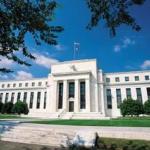 Everyone’s got a plan for sale these days. In fact, there are so many plans out there we cannot keep up with them all. Eat celery sticks and lose weight. Think and grow rich. Stocks for the long run. Naturally, plans like these run a dime a dozen.
Everyone’s got a plan for sale these days. In fact, there are so many plans out there we cannot keep up with them all. Eat celery sticks and lose weight. Think and grow rich. Stocks for the long run. Naturally, plans like these run a dime a dozen.
Good plans, however, are scarcer than hen’s teeth. You can’t possibly see them no matter how closely you look. They simply don’t exist.
This was the case on Capitol Hill this week, where money and politics collided at the biannual monetary policy gala. Despite all the hubbub, no good plans were offered. What’s more, on first glance, no bad plans were offered too.
When Fed Chair Janet Yellen’s testimony was finally over, Congress knew less about the Fed’s plans than when it started. For instance, when asked if the Federal Reserve would raise rates next month, Fed Chair Janet Yellen replied, “I can’t tell you exactly which meeting it would be. I would say every meeting is live.”
What does this mean, really? Does it mean she’ll definitely maybe raise rates? Does it mean she absolutely ‘might could’ increase them? Only time will tell.
Bad Plans
The truth of the matter is Fed Chair Yellen does have a plan. However, it’s not a good plan, it’s a bad plan. In short, her plan is to react to economic data. She wants data to tell her if the economy’s heating up or cooling off so she can adjust the monetary gas accordingly.
Is GDP growth increasing or decreasing? What about the unemployment rate, or consumer price inflation? Somehow these data points tell Yellen something about how the economy is, which she must reconcile with her dogmas of how she believes the economy should be.
Are there apparent aggregate demand insufficiencies? What about perceived supply gluts? These are the questions Yellen must endeavor to answer.
For example, just this week the Bureau of Labor Statistics reported that consumer prices, as measured by the consumer price index, spiked 0.6 percent in January. That’s their largest increase in nearly four years. In addition, the CPI has increased 2.5 percent over the last 12 months.
Obviously, a 2.5 percent inflation rate exceeds the Fed’s 2 percent inflation target by a full half-percent. By the Fed’s 2 percent inflation doctrine, this should compel them to raise rates to keep inflation in check. But, of course, there are other factors they must consider.
First, they must interpret and interpolate a variety of data. Then they must lick their index finger and hold it up to the wind. After that, the FOMC populates the Fed’s dot plot art project. Lastly, the Fed may or may not decide to raise or lower or hold rates.
The Art and Pseudoscience of Monetary Policy
Do you get it? This, in a nutshell, is how central planning via Fed monetary policy occurs circa 2017. Plain and simple, it’s an exercise in nonsense. But that’s not all. In addition to the fatal conceit of it all, there’s another fatal flaw.
Specifically, the data inputs used to plan monetary policy are bogus. Unemployment. Gross domestic product. Price inflation. These data points are all fabricated and fudged by government number crunchers’ to their liking.
For each headline number there are a list of footnotes and qualifiers. Hedonic price adjustments. Price deflators. Seasonal adjustments. Discouraged worker disappearances. These subjective adjustments greatly affect the results.
Here’s how it works?
Data is extracted from the ether and compiled to form metrics. Percentages are calculated. Rates of change are estimated. Colorful pie graphs and bar charts are produced.
Planners then go to work, to fix the price of money, to influence the economy to their liking. Their goal, you see, is to make the data outputs ‘better’ and the output charts even ‘more better.’ This is the art and pseudoscience of monetary policy.
Unquestionably, the best part of it all can be found at the center of the great charade. Where Fed Chair Yellen spins after data dots while masquerading as a public do-gooder. Round and round she goes, where she stops nobody knows.
Sincerely,
MN Gordon
for Economic Prism
Return from The Art and Pseudoscience of Monetary Policy to Economic Prism





What about not seasonally adjusted data? And are there any evidence?